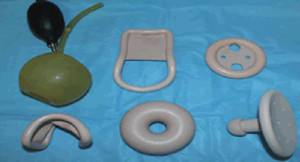
:::. Urinary Incontinence
:::. Non Surgical Treatment for Urinary Incontinence
* Up to 80% of patients with mild pelvic floor dysfunction who regularly adhere to behavioral therapy will see improvement in their bladder control. The results may take several months to achieve and results will differ from person to person. It is important to be compliant with the therapy and have realistic expectations.
* Behavioral therapy is safe, easy to learn, and has no side effects.
:::. 1. Pelvic Muscle Exercise :
The pelvic floor muscles are the most important tool that women have to improve their bladder control. Many women with incontinence are unable to neither isolate nor contract their pelvic floor muscles and so have no defense mechanisms when stress or urgency threatens to cause incontinence. Your pelvic floor muscle function will be assessed during your vaginal examination and you will be taught how to strengthen and how to use these muscles when incontinence threatens. We also provide biofeedback techniques for those who need.
* How to do & not do pelvic muscle (Kegels) exercises?
-
1. The pelvic floor muscles are the muscles you use to stop urine flow during voiding, and you can identify them by practicing stopping the flow during voiding. Many patients mistakenly contract their buttock and/or abdominal muscles, believing that they are doing the exercise correctly. You can be taught how to do this exercise correctly so as to make maximal gains.
-
2. You should feel your vagina tighten.
-
3. These exercises are best performed lying in bed. As you become better at recognizing the muscles then you can perform the exercises while talking on the phone, watching TV, cooking etc.
-
4. The exercises should be done in sets of 10, two times a day and each muscle contraction should be held for 3-5 seconds. Like any muscle in the body, “if you don’t use it you will lose it”. If during your evaluation, your doctors identify extremely weak muscles or that you can not identify the muscles well, they will have you see a physical therapist, who will be your “personal trainer”. The physical therapist may use visual aids called “biofeedback” techniques. These are techniques that help you locate and isolate the pelvic floor muscles for maximal benefit.
-
5. The initial consultation with the physical therapist is usually one hour. Based on the progress made with home exercises, further biofeedback sessions may be needed.
-
6. Other aids for pelvic floor exercises include the use of vaginal cones and other appliances.
This treatment for urge incontinence involves teaching a patient to urinate according to a timetable rather than an urge to do so. Gradually, the scheduled time between trips to the bathroom is increased as the patient’s bladder control improves.
Bladder training can be effective in the treatment of urge incontinence, mixed incontinence and urgency-frequency syndromes. It consists of a combination of strategies to control urgency and a program of scheduled urination with gradually increasing intervals. Bladder training can give women a way to re-claim control over their bladder function. Another way to think of it is “potty training for adults”.
The first step is to make a record of your baseline bladder control. That’s done by keeping aBladder Diary. This diary will establish your baseline fluid intake; number of leakage episodes; and urinary frequency (amount of time between trips to the bathroom). Next, you and your doctor decide on your initial scheduled voiding interval. If your bladder diary shows that you go to the bathroom every hour or less, your scheduled voiding interval will start at 30 minutes. If your bladder diary indicates more than one hour between your bathroom breaks, then your first interval will be one hour.
Once you establish your initial voiding schedule, follow these instructions:
• Void every morning as soon as you wake up and every evening just before going to sleep.
• Void every time your schedule says you should – regardless of whether you think you need to.
• Make every effort to put off urinating – even if you have a very strong urge to do so – until your scheduled time comes up.
If you feel as though you are about to have an accident before your scheduled time to urinate, focus on something else to make the urge go away. Count backwards from 100 by 7’s; Sit down or lie down; Get on the phone with a friend; Perform several strong Kegel exercises.
• You only need to follow the schedule while you are awake. No scheduled urination is necessary during sleeping hours.
• If you absolutely have to interrupt your schedule, get back on track (with the next scheduled void) as soon as possible.
• Keep a daily record of your urination and leakage episodes, so that you can track your progress.
• When the initial schedule gets easy for you (i.e. when you virtually always make it to your scheduled time without difficulty), increase your interval by 30 minutes.
• Stay on a given interval for at least one week before increasing.
• Aim for a goal of minimal to no accidents and a voiding schedule of between 2 – 4 hours. Getting there should take you anywhere from 4 – 12 weeks.
• You may find it easier to be successful with your bladder training if you go on the fluid and dietary modification at the same time.
This term refers to a variety of techniques that teach patients bladder and pelvic muscle control by giving positive feedback when the patient performs the desired action. This feedback can be from an electronic device or directly from health professional.
:::. 3. Fluid & dietary modification :
Most patients with voiding problems, urinary incontinence and pelvic organ prolapse give very little consideration to their fluid intake and to their bowel habits. In general advise that we will give will include :
-
1. Decrease or eliminate caffeinated and alcoholic beverages. Other foods and beverages are also thought to contribute to bladder leakage although their effect on the bladder is not always understood. The patient may want to decrease their intake of citrus juices and fruits, highly spiced foods, sugar and artificial sweetener, milk and milk products, and carbonated beverages.
-
2. Avoid constipation by adding high fiber foods and by not restricting water intake. (ideal total fluid intake is between 6-8 glasses per day) Cranberry, apple and grape juice do not irritate the normal bladder and makes the urine more acid-thus preventing the spread of bacteria.
-
3. No smoking!!!
-
4. Drink a total of 6- 8 glasses of fluid per day. Too little allows for concentrated urine which can irritate the bladder. Too much only aggravates an urgent bladder.
Good Bladder Habits will help your bladder control to stay normal.
• Drink 1.5 to 2 litres of fluid a day (water is best).
• Avoid “just in case visits” to the toilet- only empty your bladder when you need to.
• Do pelvic floor exercises every day.
• Avoid constipation.
• Do some general exercise 3 times a week (walking is great).
• Stay in the healthy weight range.
Medications
There are a number of drugs that are used in the treatment of urge incontinence.
Antimuscarinic agents are most widely used. See Treatment of Overactive Bladder.
Estrogens
Estrogens may be very helpful for women with both stress and urge incontinence and those with pelvic organ prolapse symptoms. If the patient does not have a uterus, then estrogens may be taken alone. There are many brands of oral estrogen therapy and all are similarly effective. Estrogen can also be delivered by a skin patch. To directly treat the vaginal tissue, vaginal estrogen cream is available. A newer way to deliver estrogen is by wearing a device in the vagina. This ring is placed in the vagina by your doctor and changed every 3 months. Estrogen given orally allows for the systemic benefits of estrogen.
If you have a uterus a hormone called progesterone must be given along with the estrogen. This hormone is commonly given orally. When a uterus is present, bothersome side effects can include vaginal bleeding. This problem can often be treated by changing the dosage breast cancer.
:::. NON-SURGICAL TREATMENT OPTIONS FOR PROLAPSE
:::. NON-SURGICAL TREATMENT OPTIONS FOR PROLAPSE
:::. Pelvic Muscle Exercises (PME);
Also known as Kegel’s exercises, they strengthen the support of the pelvic organs and are most commonly used to treat stress urinary incontinence. PME techniques are also useful in prolapse prevention. Once the symptoms of prolapse are severe, however, these exercises are of little benefit. u CLICK HERE t to see how to do and not to do pelvic muscle (kegel’s) excecise.
Pessary :
A device worn in the vagina like a diaphragm. Pessaries are used to support the vagina, bladder, rectum and uterus as necessary. They come in a variety of shapes and sizes, so a doctor or nurse must fit them. These are some of the pessaries that are available.
You will be taught how to remove it for cleaning, and replace it yourself. The pessary can be a temporary treatment for prolapse or it can be used for many years if the patient desires.
How to clean and replace your pessary:
-
1. Remove your pessary as often as you would like. Typically, it can be removed at bedtime once or twice a week.
-
2. Clean your pessary with warm water and a nonirritating soap and reinsert it as your doctor or nurse taught you.
©2018-2023, All rights reserved to Arab Center for Urogynecology and Infertility. Powered By Creativity Design Studio |جميع الحقوق محفوظه للمركز العربي للجراحة البوليه النسائية و العقم | الدكتور رامي محافظة

